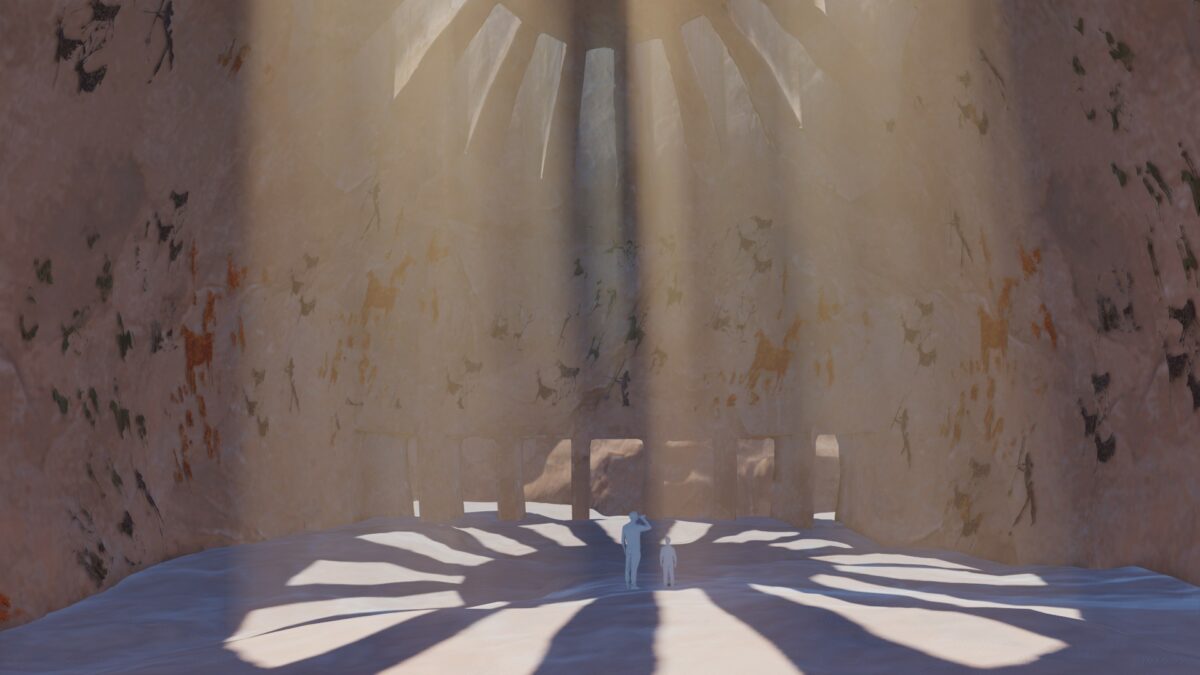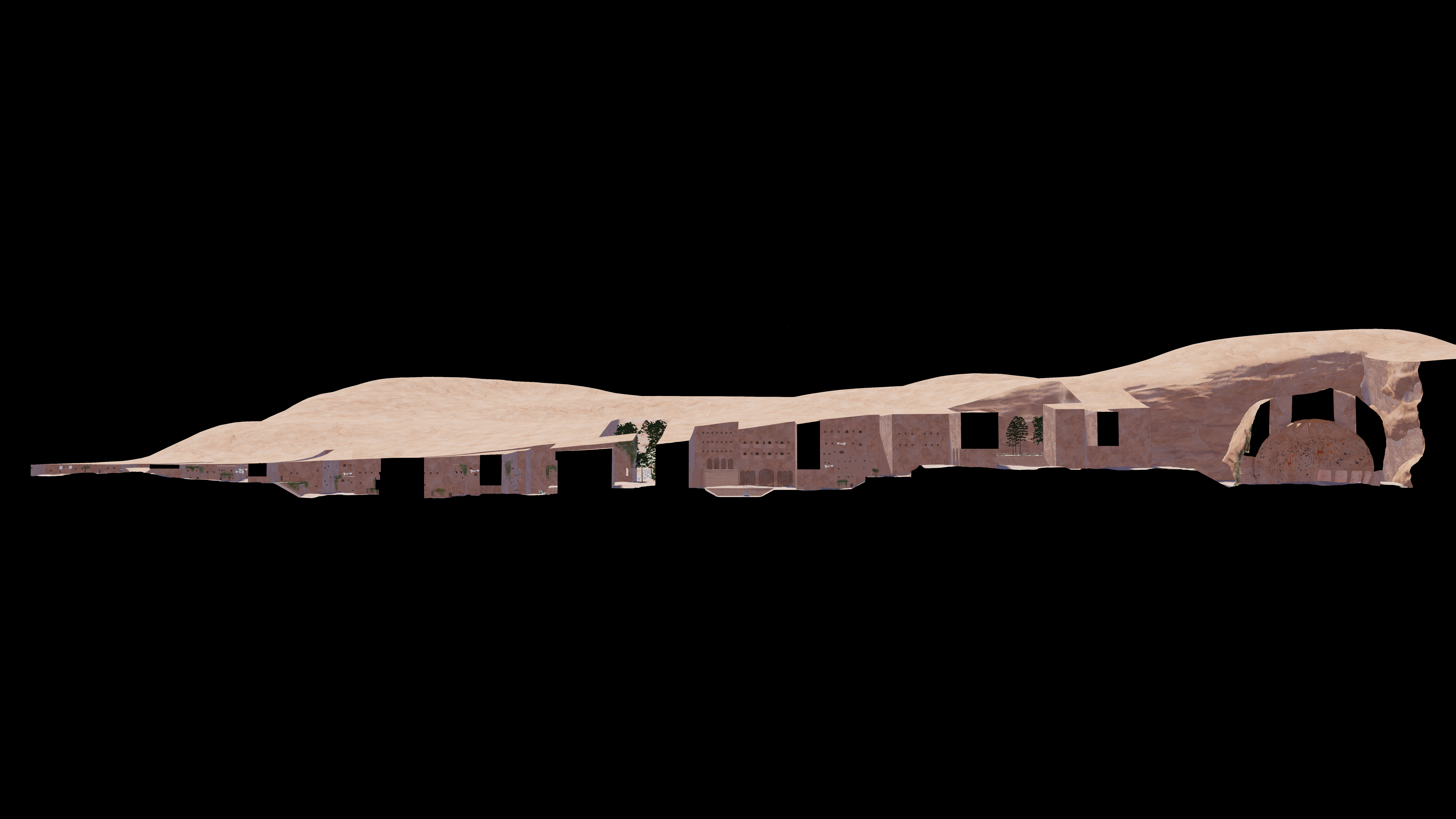The movie “Wind will carry us” by Abbas Kiarostami is selected to work as a situational site for the project. The procedure which is appealing, was how the director used a small village in Iran to tell a story in which audience never sees an interior but a whole story takes place in urban spaces. The main protagonists are an outsider to village and a local child. In most of the scenes they are wandering around the village. Nearly in every shot they are getting in touch with the local people or animals thanks to the morphology of the context. The site is organized like a woven net of a spider that connects one space to another.
This project is looking for ways to learn from this vernacular context for today’s cities: to build a related net in the urban spaces, to turn the indiviual ideology to the notion of belonging to the surroundings and form interactions with context, to search relations between built-unbuilt, landscape-manscape, public-private and scale-space.
The metaphor of soil morphing and taking shape by the surroundings, relations, human behaviours and needs are used in the project and also unlimited possibilities lie under beneath the surface of the soil, is questioned during the design process. For centuries, soil was the main material which people shaped their habitation with it. They used this modest material not only to habitate but also to express their feelings, cultural differences and art through morphing it with their bare hands. The space location decisions and characteristics are organized with the help of my readings. I decided to locate spaces in the sectional horizontal way like the movie itself. The main parameter that I used to locate my spaces was the public gradient of the places. In the core center, I located my most public space which is the city center and when going opposite ways, it is getting more private or intimate. In the end of the section, the sacred site is located. In this area, I tried to integrate my research topics into more specific design. By extracting the soil around, the paths morphed the shape of the temple. In the inside, spaces are inverted once again by the extraction of the spherical shape and light tubes. In the walls, I used the cave drawings to make a reference to the beginning of the human interaction with soil through art.
One minute site
Project presentation
Book project
https://1drv.ms/b/s!Arp-2gW9Ermy5BYkQ5wtOU4bTntU
Additional video work
– Morphing
– Temple
– Moving section


